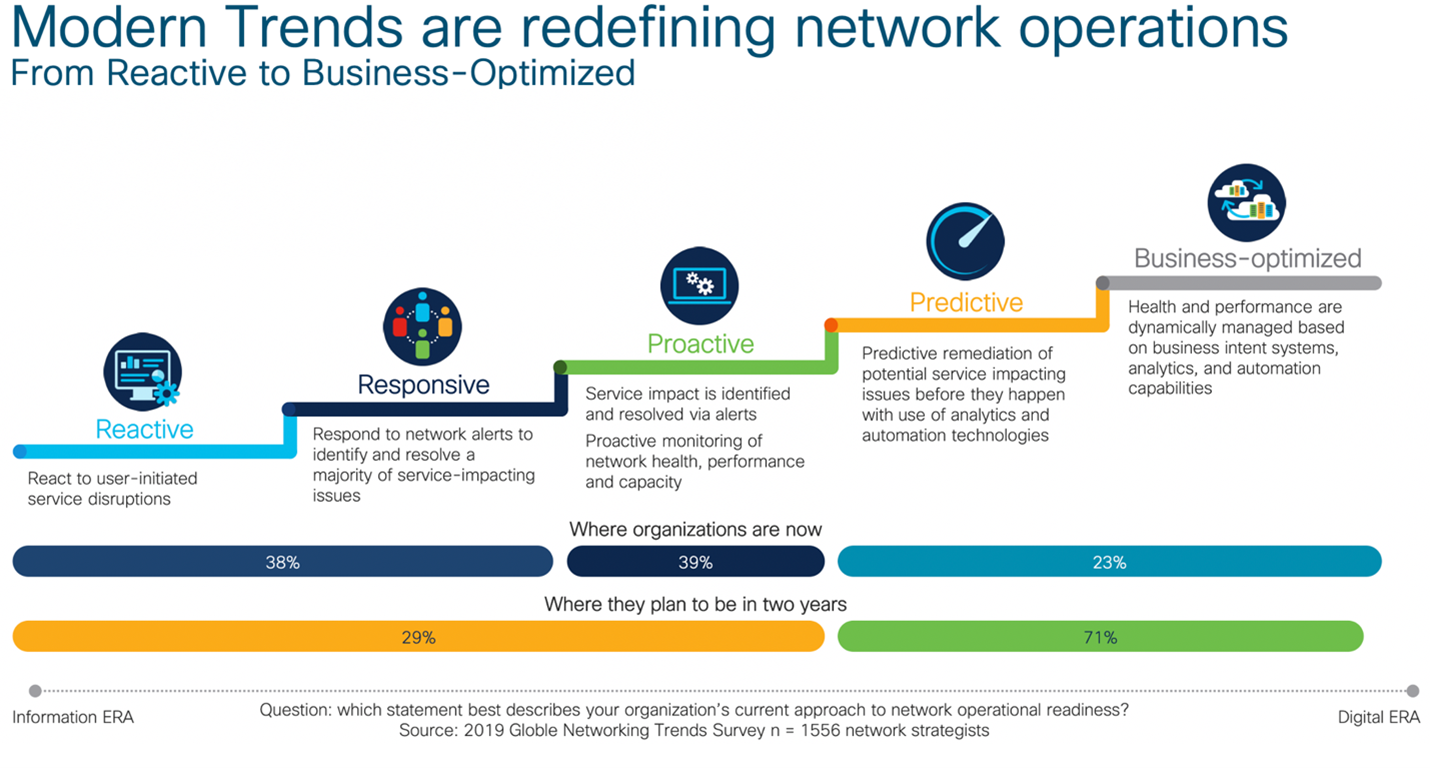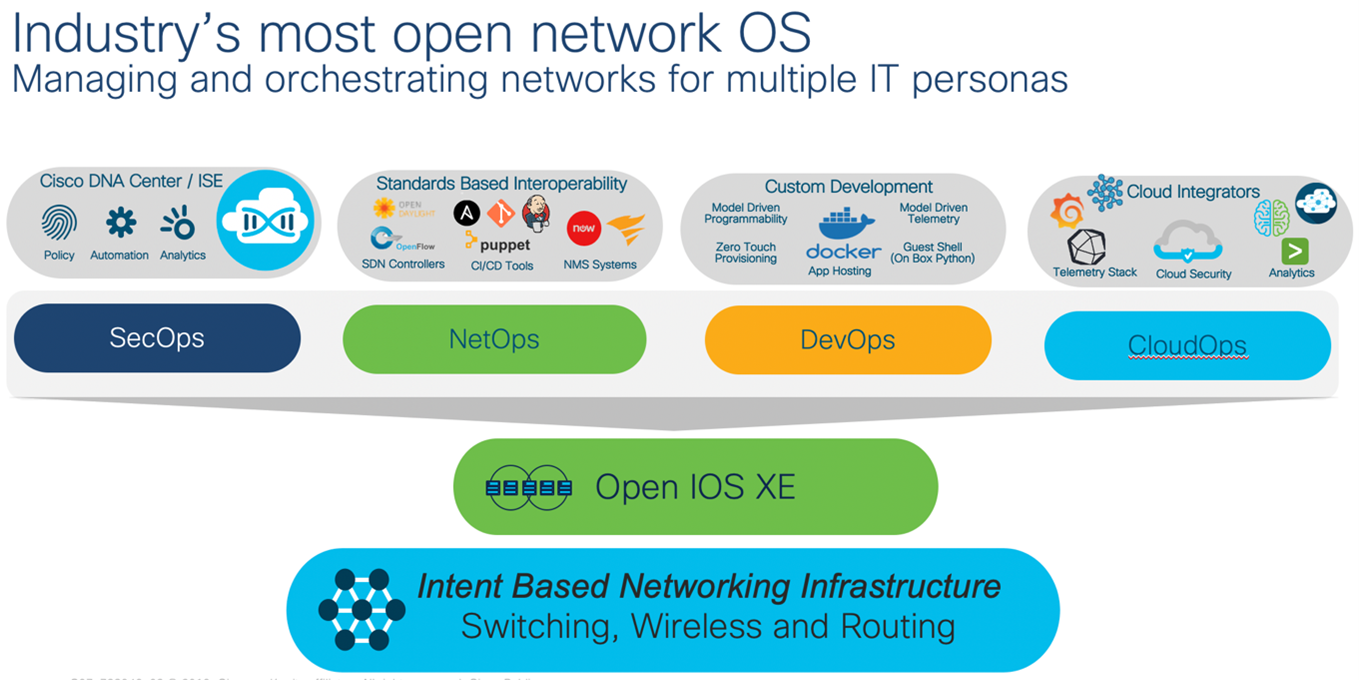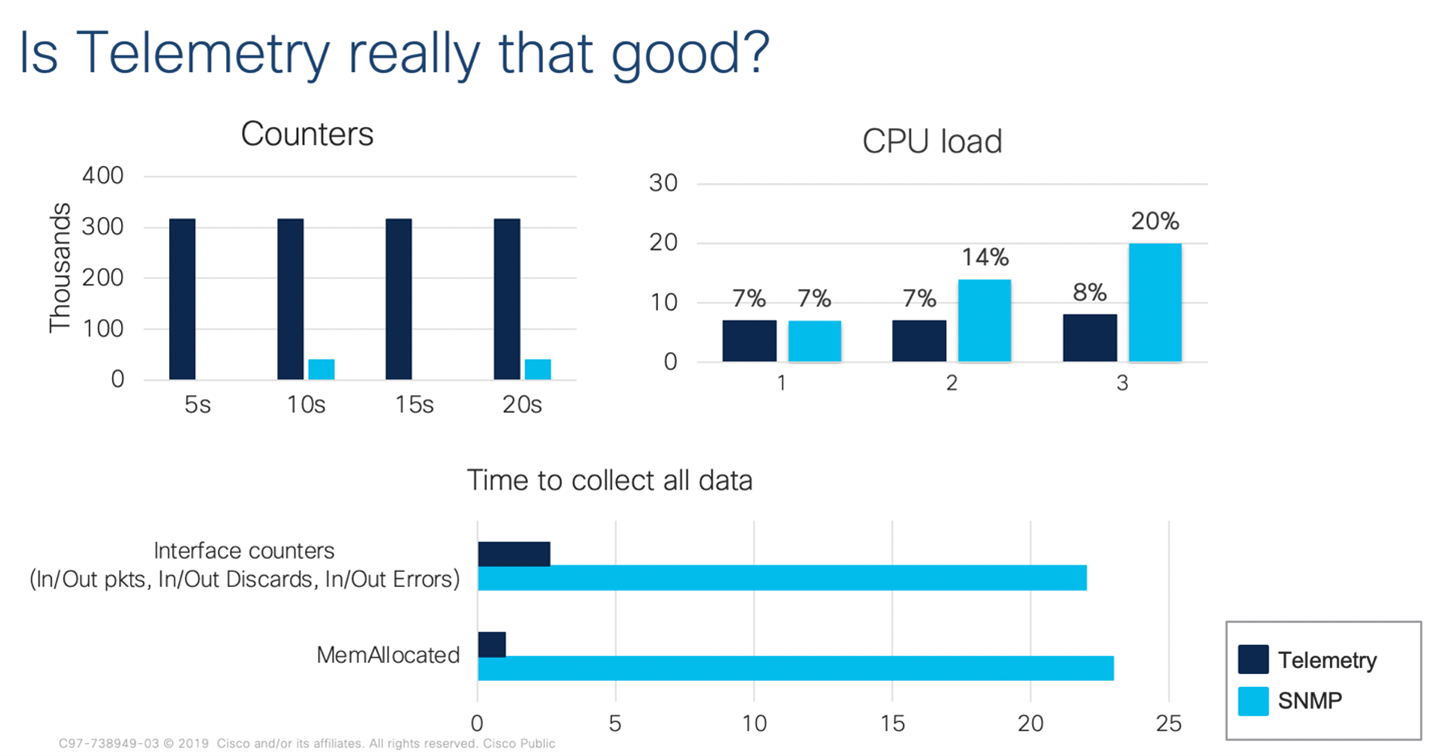This blog is co-authored by Jay Sharma.
The new normal of enterprise networks requires an open and extensible network operating system. One that provides open, standards-based, programmable interfaces to automate network operations, and brings deep visibility into user, application, and device behaviors. Cisco IOS XE addresses these needs as the single OS for enterprises. It delivers a transformational level of automation and programmability. Thus, reducing business and network complexity. This need to redefine network operations clearly came out as a trend during Cisco’s networking trend survey.

We are seeing more and more businesses moving away from a traditional reactive model to a more pro-active mode of operating their networks. So it’s no surprise that customers are looking for capabilities and toolkits in their arsenal that can help with this journey.
Cisco IOS-XE is the center piece of this transformation as campuses are redefined in today’s environment. They need to provide capabilities that can either be consumed by a controller (like Cisco DNA Center) to provide turnkey solutions, or by customers looking to create custom applications that can work with open source tools. The standards-based device APIs within the operating system are what allows all the different tools to effectively orchestrate, manage, and monitor all of campus infrastructure.

The assurance capabilities from Cisco DNA Center help admins to proactively detect issues using complex machine reasoning algorithms. Using open source tool-sets to collect KPIs from devices for NOC, IOS-XE uses a standards-based, model-driven programmability stack. This not only provides reliability, but also sends data securely in a structured format. Thus, reducing the workload from different services needed to clean and format the data. Now you can focus on what really matters to the end user — getting proactive visibility into network state and issues.
The open nature of the APIs exposed from within the operating system is what allows IOS-XE to seamlessly met the goals of all the different stakeholders within an organization. This is increasingly important, as we see Cloud, DevOps, NetOps, and SecOps become central to an organization’s strategy to modernize their networks.
Stream if you want to go faster
SNMP has been the de-facto standard for collecting KPIs from devices for many decades. While it is really good at solving a certain set of problems, the protocol has not been able to catch up to the amount of data being generated and exported out of the network.
The model-driven telemetry stack on IOS-XE improves on SNMP by providing the following benefits
- A protocol that is inherently secure using HTTPS and TLS based encryption on TCP
- Consistent encoding
- Reliable Transport
- Decreased CPU load as it does not require polling to send stats
- Dynamically configurable
- Support for event driven/on-change telemetry
All such protocol benefits set aside, the true value of model-driven programmability – and why its been used to collect data on controllers and open source tools alike – is the fact that it helps collect exponentially higher amounts of data while using fraction of the device resources. The instance below highlights how collecting counters is exponentially faster with model-driven telemetry when compared to SNMP.

While SNMP has carried the load for decades, model-driven telemetry capabilities within Cisco IOS-XE, that run on the Catalyst family of products, have become mainstream. As a result, you can meet the ever-growing need to collect more data to perform MRE like operations making your networks more agile and pro-active against threats and network issues.
References
- Getting started with model driven telemetry blog
- Cisco IOS XE MDT learning lab
- IOS XE Programmability eBook
- Programmability configuration guide
- Model driven telemetry sandbox blog
We’d love to hear what you think. Ask a question or leave a comment below.
And stay connected with Cisco DevNet on social!
Twitter @CiscoDevNet | Facebook | LinkedIn
Visit the new Developer Video Channel

CONNECT WITH US